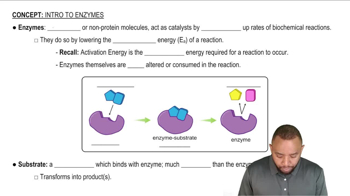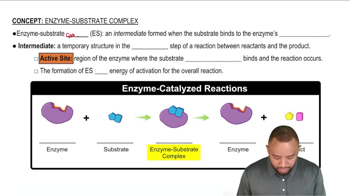Textbook Question
What is the name of the class of enzymes that would catalyze each of the following reactions?
c. splitting peptide bonds in proteins
1059
views
 Verified step by step guidance
Verified step by step guidance Verified video answer for a similar problem:
Verified video answer for a similar problem:



 2:14m
2:14mMaster Intro to Enzymes Concept 1 with a bite sized video explanation from Jules
Start learning